The overlooked history of Afro-Argentines and the factors that led to their near-disappearance in Argentina, a country deeply marked by the transatlantic slave trade.
When looking at the Argentine national football team, dominated by faces that seem exclusively European, it’s hard to imagine that Argentina, today, hides within its history a very different reality: a significant part of its population was once deeply rooted in the fertile soil of the African continent.
As you observe the Argentine national team before a match against Italy in June 2022, it’s clear how distant this historical reality appears.
Nofi invites you to explore and unravel this historical paradox: how is it that Argentina, despite its active participation in the transatlantic slave trade and slavery, now has one of the smallest Afro-descendant populations in the “New World”? This question uncovers hidden truths and deliberately omitted pages of Argentine history, revealing a forgotten chapter of the African diaspora.
Where did the Afro-Argentines disappear to?

In their imperialist quest to dominate the Americas in the 15th century, European colonizers deployed various exploitation strategies, marking the beginning of an era of suffering and dehumanization. Among these strategies, the forced labor of local Amerindian populations was initially favored. However, this approach encountered major obstacles, highlighting the resilience and indomitable resistance of indigenous peoples:
- Resistance to acculturation: Many Amerindian groups fiercely resisted the forced assimilation and destruction of their culture, identity, and way of life by European invaders. This resistance hindered the colonizers’ plans to subjugate and exploit these peoples at will.
- Alarming mortality rate: The inhumane and exhausting labor imposed on the indigenous people led to a high mortality rate. These mass deaths were not only the result of brutal exploitation but also of a blatant disregard for human life and dignity.
- European diseases: The arrival of Europeans brought diseases unknown in the New World. These diseases, against which indigenous populations had no immunity, decimated entire communities, leaving behind broken and vulnerable societies.
This dark and tragic reality forced the colonizers to seek other sources of labor, leading them to intensify the transatlantic slave trade, another dark chapter in human history. Thus, Africans torn from their homeland became the new victims of this insatiable thirst for domination and exploitation.
The roots of slavery in Argentina: from the slave trade to the resilience of Afro-Argentines
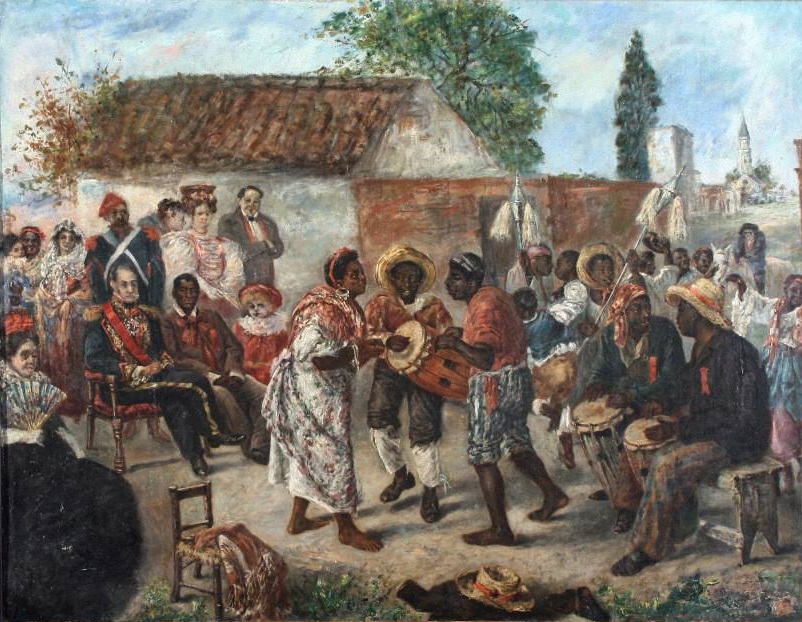
Faced with the failure to exploit indigenous peoples, Spanish colonizers turned to another form of brutal oppression: the deportation and enslavement of Sub-Saharan Africans to the Americas. In Argentina, this dark chapter of history began in the Río de la Plata colonies as early as 1588. The port of Buenos Aires became a major hub for the slave trade, especially after the city opened its doors to English merchants for the importation of slaves.
Before the 16th century, Africans arrived in Argentina in relatively small numbers, primarily from the Cape Verde islands. Subsequently, most of the Africans deported to Argentina came from various Bantu-speaking ethnic groups, originating from regions that correspond today to Angola, the Democratic Republic of Congo, and the Republic of Congo. These men and women, torn from their lands and cultures, were forced to cross the Atlantic under inhumane conditions, only to be subjected to a life of slavery and forced labor.
This period marked the beginning of an era of suffering and resilience, where Africans and their descendants had to struggle for survival and dignity in a world that systematically dehumanized them. Their history in Argentina stands as a testament to the resistance and strength of the human spirit in the face of adversity and oppression.
Hidden within the official history of Latin America is a truth often ignored: nearly 12 million African souls were torn from their homeland and deported to this New World, becoming the invisible pillars of a flourishing colonial economy. Buenos Aires and Montevideo, the symbolic ports of Argentina and Uruguay, were silent witnesses to this massive arrival, marking the beginning of an era of suffering and struggle.
These Afro-Argentine slaves, reduced to mere shadows of themselves, were forced to work in agriculture and livestock, key sectors of the colonial economy. Their labor, though crucial, was rendered invisible, their existence reduced to mere commodities serving their masters. In urban areas, particularly in the neighborhoods of San Telmo and Monserrat in Buenos Aires, many slaves engaged in crafts, creating objects of immense cultural richness, the benefits of which, ironically, went to those who oppressed them.
The majority of these deported Africans were sent to the interior provinces of Argentina, where agricultural production was most significant. These regions still bear the traces of this African presence, though often erased or minimized in dominant historical narratives. A significant portion of the African population also left its mark on other provinces, weaving a rich and complex African history into the very fabric of Argentina, though too often overlooked.
This history, that of millions of deported and enslaved Africans, is a crucial chapter in Latin American history. It recalls the resilience and strength of a people who, despite oppression and suffering, managed to preserve their heritage and contribute indelibly to the construction of these nations.
The roots of slavery in Argentina: from the slave trade to the resilience of Afro-Argentines
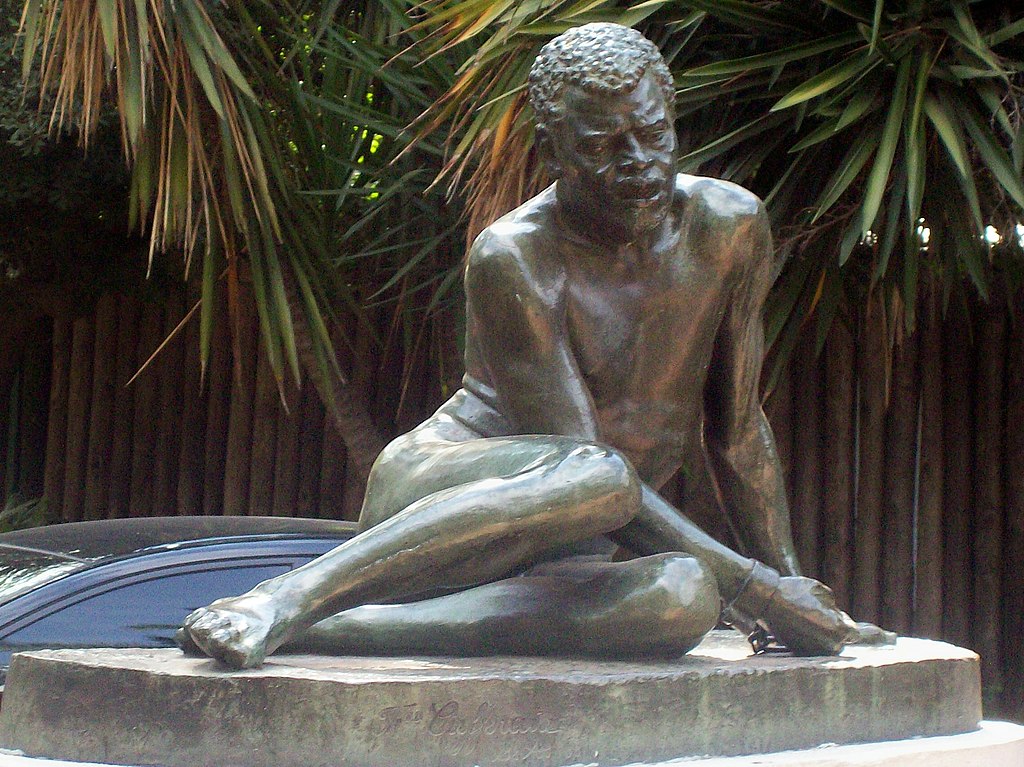
Faced with the failure to exploit indigenous peoples, Spanish colonizers turned to another form of brutal oppression: the deportation and enslavement of Sub-Saharan Africans to the Americas. In Argentina, this dark chapter of history began in the Río de la Plata colonies as early as 1588. The port of Buenos Aires became a major hub for the transatlantic slave trade, particularly after the city opened its doors to English merchants for the importation of slaves.
Before the 16th century, Africans arrived in Argentina in relatively small numbers, primarily from the Cape Verde islands. Later, most of the Africans deported to Argentina came from various Bantu-speaking ethnic groups, originating from regions that correspond today to Angola, the Democratic Republic of Congo, and the Republic of Congo. These men and women, torn from their lands and cultures, were forced to cross the Atlantic under inhumane conditions, only to be subjected to a life of slavery and forced labor.
This period marked the beginning of an era of suffering and resilience, where Africans and their descendants had to fight for their survival and dignity in a world that systematically dehumanized them. Their history in Argentina stands as a testament to the resistance and strength of the human spirit in the face of adversity and oppression.
Hidden within the official history of Latin America is a truth often ignored: nearly 12 million African souls were torn from their homeland and deported to this New World, becoming the invisible pillars of a flourishing colonial economy. Buenos Aires and Montevideo, the symbolic ports of Argentina and Uruguay, were silent witnesses to this massive influx, marking the beginning of an era of suffering and struggle.
These Afro-Argentine slaves, reduced to mere shadows of their former selves, were forced to work in agriculture and livestock, key sectors of the colonial economy. Their labor, though crucial, was rendered invisible, their existence reduced to mere commodities serving their masters. In urban areas, particularly in the neighborhoods of San Telmo and Monserrat in Buenos Aires, many slaves engaged in crafts, creating objects of immense cultural richness, the benefits of which, ironically, went to those who oppressed them.
The majority of these deported Africans were sent to Argentina’s interior provinces, where agricultural production was most significant. These regions still bear the traces of this African presence, though often erased or minimized in dominant historical narratives. A significant portion of the African population also left its mark on other provinces, weaving a rich and complex African history into the very fabric of Argentina, though too often overlooked.
This history, that of millions of Africans deported and reduced to slavery, is a crucial chapter in Latin American history. It recalls the resilience and strength of a people who, despite oppression and suffering, managed to preserve their heritage and contribute indelibly to the construction of these nations.
The ethnic mosaic of Buenos Aires in 1806-1810: a historical overview
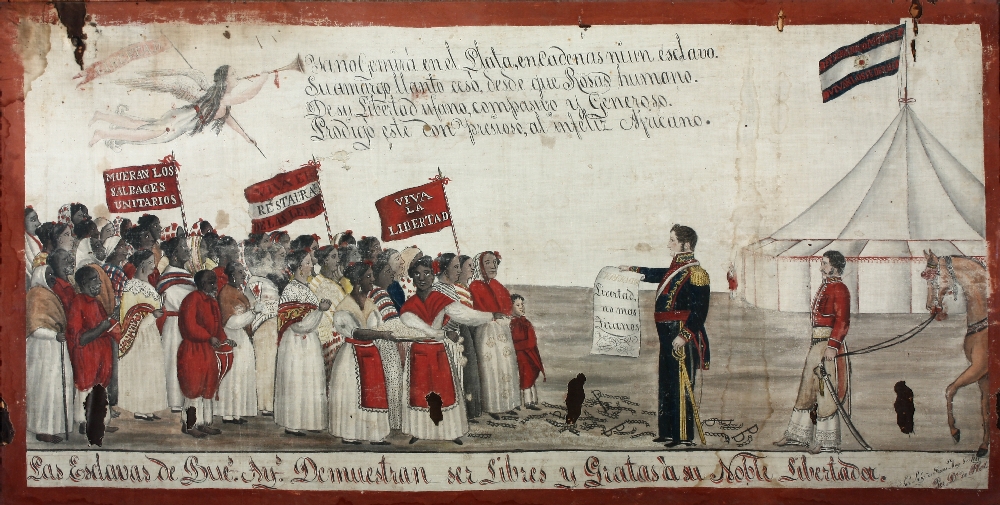
In the early 19th century, Buenos Aires, a city now synonymous with Hispanic culture in South America, presented a very different face, rich with often-forgotten ethnic diversity. In 1806-1807, the ethnic composition of Buenos Aires was a true kaleidoscope of cultures and origins, reflecting the city’s complex and mixed history.
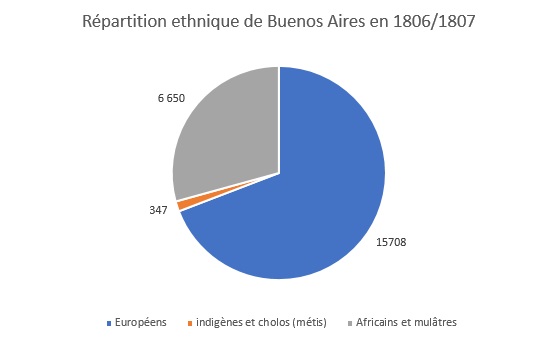
In 1810, the city of Buenos Aires had :
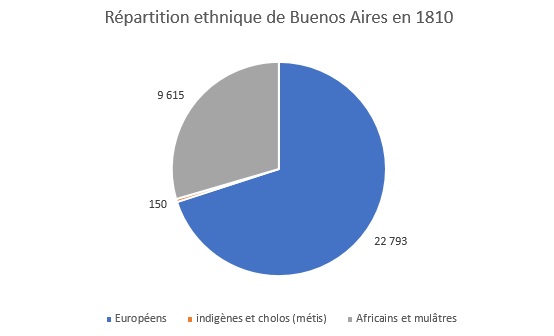
The decline of the Afro-Argentine population: a historical analysis
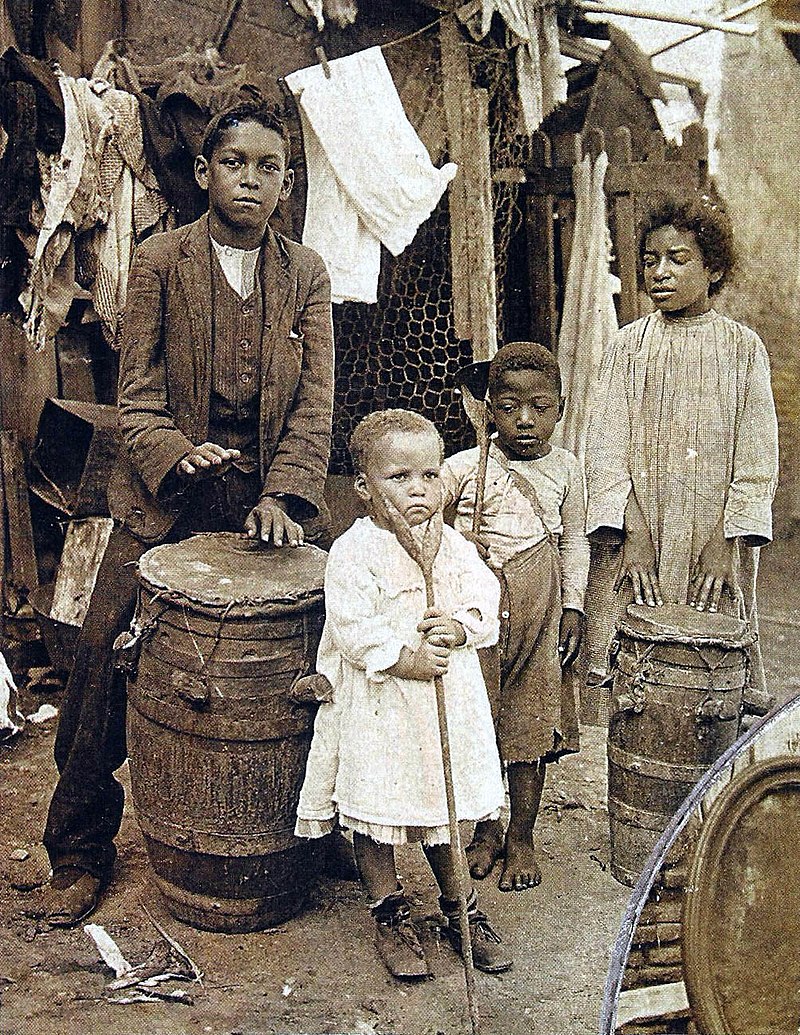
At the heart of Buenos Aires, the Monserrat neighborhood, nicknamed Barrio del Tambor, was once distinguished by its high concentration of African residents. Located near the Congress Palace, this neighborhood was a vibrant symbol of the African presence in Argentina. However, over the years, a drastic decline in the Afro-Argentine population was observed, resulting from multiple complex factors.
- Disproportionate participation in the national army:
During the Paraguayan War (1865-1870), Afro-Argentines made up a significant portion of the national army. The considerable human losses suffered during this conflict particularly affected the Black community, leading to a marked demographic imbalance between men and women. - Oppressive policies under domingo sarmiento:
Argentine President Domingo Sarmiento is accused of implementing oppressive policies aimed at eliminating the Black population. These included forced enlistment in the army, confinement to disadvantaged neighborhoods, and inadequate sanitary measures that favored the spread of epidemics. - Impact of epidemics:
The yellow fever epidemic of 1871 struck the poor neighborhoods where many Afro-Argentines lived, worsening their already precarious situation. - European immigration and displacement:
Between 1880 and 1950, massive European immigration, encouraged by the Constitution of 1853, altered the country’s demographics. Many Afro-Argentines moved to Uruguay and Brazil in search of better living conditions. - Challenges faced by free Afro-Argentines:
Free Afro-Argentines were often forced into low-paying, menial jobs or resorted to begging. This economic precarity contributed to the general impoverishment of the community.
Understanding the past to illuminate the present: the Afro-Argentine legacy

The significant decline in the Afro-Argentine population, as evidenced by the 2010 census recording only 149,493 individuals, reflects a complex series of historical and socio-economic factors. This demographic shift is not a matter of chance but rather the result of a series of events and policies that shaped the destiny of the Afro-Argentine community over the centuries.
A detailed understanding of these factors is crucial not only to acknowledge and appreciate the rich and often overlooked history of the African diaspora in Argentina but also to understand how past dynamics continue to influence contemporary Argentine society. By examining and recognizing this history, we can better appreciate the diverse cultural identity of today’s Argentina.
Discover the overlooked history of Black Argentines

The history of Black communities in Argentina is rich and complex, marked by centuries of presence, contribution, and struggle. Yet, their heritage often seems invisible in the national narrative. “Where Have the Black Argentines Gone?” explores this essential question, revealing the hidden layers of Argentine history and the contemporary challenges faced by the Afro-Argentine community.
Engage with us on Nofi.media to delve into forgotten stories and restore African and Afro-descendant voices to their rightful place in history. Together, we can break the silence, celebrate diversity, and build a more inclusive future.
Click here to learn more about the contributions, struggles, and history of Black Argentines and to support efforts to make their indelible heritage visible.
